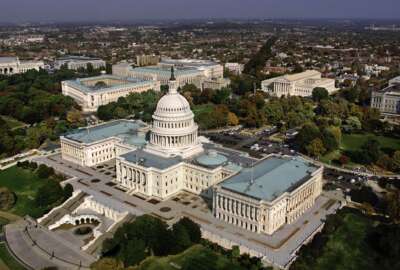
2018: Time may be on your side
Congress is likely to take another run at the federal retirement program, but time may be on the side of federal workers and retirees for a change.
Congress may take another serious swing at your FERS and CSRS retirement programs this year. When, that is, nervous members of the House of Representatives can tear themselves away from the first order of business, which is getting reelected. Or if they are retiring (as a record number are) ensuring that someone of the same political party replaces them.
The process of getting reelected or elected is time consuming. Members need to spend more time back in their districts connecting with voters. And in special telephone rooms where they can spend several hours a day dialing for dollars from potential donors.
In 2017, it appeared that some parts of the federal retirement program — the jewel in the crown of Uncle Sam’s benefits package — were about to get the chop. The question was whether big savings would be scored by eliminating inflation-protection (COLAs) for current and future FERS retirees. That would have cost current and future retirees billions of dollars over time as inflation crept up each year, but pensions remained static. Or by eliminating the Social Security gap payment for feds who retire, or who are forced to retire, before they reach age 62. That payment can be worth thousands of dollars a year and is a must for many — like air traffic controllers, law enforcement personnel, firefighters and others who must leave by age 57.
Congress also had its sights on the more generous CSRS program. One plan would have reduced future cost-of-living adjustments for CSRS retirees by 0.5 percent of the actual rise in inflation. While not as harsh as the FERS proposal even that small reduction over time would have reduced the purchasing power of retirees.
There were also plans to raise the employee contribution to the FERS retirement plan, and reduce future annuities by basing them on the employees highest 5-year (instead of the current high-3 formula average salary).
The spotlight on the benefit package unnerved many feds — who have been through this before — because it seemed more intense. Some employees retired before the start of the fiscal year, or toward the end of December in hopes that if any of the changes were enacted they would somehow be grandfathered in. As it turned out nothing happened. Again. But it was closer than usual.
Congress ran out of enthusiasm, steam and time late in 2017 and instead got caught up in funding extensions. Lobbyists and legislative teams representing federal union members, management groups, retirees and career executives mostly worked togather to beat back the serious assault on the retirement program. When nothing happens that means they have done something.
Because this is an election year, and most ungerrymandered House seats are up for grabs, incumbents who want to keep their jobs, or assure that they pass on to someone of the same political party, are going to be spending lots of time outside of Washington. The House has scheduled 140 days when it may not be in session. And that doesn’t count Saturdays and Sundays, which bring the combined time outs to 244 days. Leaving a grand total of 121 (out of 365) to do something other than politicking.
Nearly Useless Factoid
A nickel — a U.S. 5-cent coin — is comprised of 25 percent nickel and 75 percent copper.
Source: Wikipedia
Copyright © 2025 Federal News Network. All rights reserved. This website is not intended for users located within the European Economic Area.
Mike Causey is senior correspondent for Federal News Network and writes his daily Federal Report column on federal employees’ pay, benefits and retirement.
Follow @mcauseyWFED





